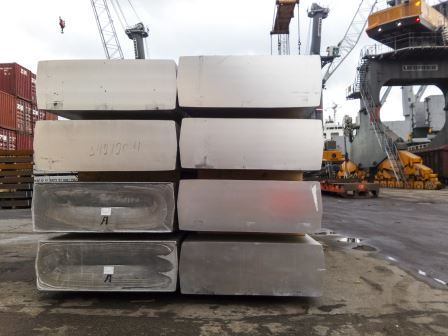
Aluminium was the front-runner in the recent rally in base metal commodities. However, wild swings in prices were seen in the metal since the start of the year due to various geopolitical factors affecting its key fundamentals.
In the domestic futures market, prices were packed inside Rs 128.30-178.85 kg levels since January. It jumped to a record peak of Rs 178.85 during mid-April due to strong international market coupled with weak domestic currency.
Prices in its key international market LME too mirrored the trend. Prices shot up from a low of USD 1977 a tonne in the first week of April to USD 2718 a tonne, its highest level since June 2011 by mid of April.
US decision to impose a tariff on various products being imported from China, the biggest trade partner of the US and a unilateral decision to enforce sanction on Iran on the nuclear deal has shaken the entire commodities market recently.
A strong dollar, which makes commodity prices feeble, affected the metal too. However, the major trigger which the commodity reacted to was the US sanctions on Russian aluminium major Rusal, which is the world’s second-largest aluminium producer, concerns over global trade war and a volatile dollar.
The US Treasury Department’s sanctions on Russian aluminium major Rusal restricted Americans from doing business with the Russian company.
Rusal holds 6 percent of the world’s aluminium output and operates mines and smelters across the world. Two-third of Rusal’s production are outside Russia making the company an integral part in the global supply chain.
Sanctions imposed by the US ignited worries over global supply and lifted prices to multi-year highs. The trade spat between the US and China and US decision to impose a tariff on imports on commodities like steel and aluminium worsened the sentiments.
China is the dominant player in global aluminium market with it being the single largest producer, contributing more than fifty percent of the world production, and the largest consumer.
Even as supply concerns prevail in EU and U.S markets, Chinese warehouse inventories are at record highs, though LME stocks are at 2009 lows. LME inventories were at record highs during January 2014 due to a global supply glut but later showed a draw down.
However, prices are stabilizing now with spot premiums in Asia have declined sharply due to a large inflow of Chinese metal and bets that Russia’s aluminium major Rusal will avoid sanctions.
Aluminium is the second most consumed metal in the globe after steel. It is used for various industrial, housing and consumer uses which include electrical power transmission, construction, making cans, packaging, air conditioners, furniture and vehicles
Looking ahead, the prevailing global geopolitical tensions likely to be surpassed by record Chinese inventory levels. Recently, China’s aluminium exports rose to their highest levels in three years last month, said a report.
The global supply-demand, economic conditions of top consuming countries will too have a direct bearing of global prices. Smelter capacity and any ramp up or shut down of plants will also affect the sentiments.
Beijing’s war on environment pollution may lead to more extensive curbs on heavy industries like aluminium smelters and delay in new smelter projects are likely to impact stocks and output from the country in the near future.
Unless any change in its key fundamentals, the prevailing positive outlook possibly to continue. In the most active futures market, a range-bound trade inside Rs 172-143 a kg will be seen initially but, breaking any of the sides would suggest a fresh direction to the metal.
Posted: June 2018









